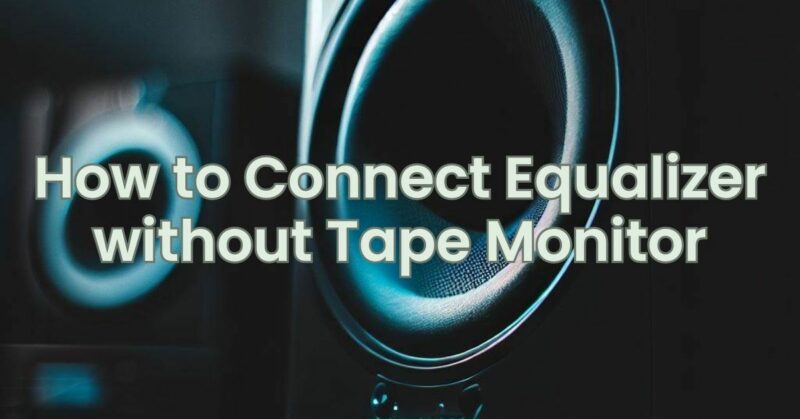An equalizer is a valuable tool for fine-tuning the sound output of your audio system, allowing you to adjust specific frequency ranges to match your preferences. While many older stereo receivers and amplifiers feature a dedicated tape monitor loop for connecting an equalizer, modern audio equipment often lacks this option. However, you can still connect an equalizer to your audio setup even without a tape monitor loop. In this step-by-step guide, we will walk you through the process of connecting an equalizer to your stereo system without a tape monitor, enabling you to enhance your audio experience.
Step 1: Assess Your Stereo System: Before proceeding, check your stereo receiver or amplifier to confirm that it doesn’t have a dedicated tape monitor loop. If you are unsure, consult the user manual or examine the rear panel of the unit for any labeled connections related to tape monitoring.
Step 2: Identify the Audio Connections: On your stereo receiver or amplifier, look for the audio input and output connections. Typically, these include RCA jacks labeled as “AUX,” “CD,” “Tape,” or “Line In/Out.” You will use these connections to connect the equalizer.
Step 3: Disconnect the Power: For safety purposes, disconnect the power from your stereo system by unplugging it from the electrical outlet or turning off the power switch. This will prevent any potential electrical issues during the connection process.
Step 4: Connect the Equalizer: Take a pair of RCA cables and connect one end to the audio output jacks on your stereo receiver or amplifier. These are usually labeled as “Tape Out” or “Preamp Out.” Ensure that you connect the left channel to the left output and the right channel to the right output.
Step 5: Connect the Equalizer Input: Take the other end of the RCA cables connected to the stereo receiver or amplifier and plug them into the audio input jacks on the equalizer. These inputs are typically labeled as “Line In” or “Input.”
Step 6: Connect the Equalizer Output: Take another pair of RCA cables and connect one end to the audio output jacks on the equalizer. These outputs are usually labeled as “Line Out” or “Output.” The other end of these cables will be connected to the audio input jacks on your stereo receiver or amplifier.
Step 7: Reconnect the Power: After completing the connections, reconnect the power to your stereo system by plugging it back into the electrical outlet or turning on the power switch.
Step 8: Adjust the Equalizer Settings: Power on your stereo system and equalizer. Start playing audio content and adjust the equalizer settings to your preference. Experiment with different frequency ranges and levels to achieve the desired sound output. Fine-tune the settings until you are satisfied with the audio quality.
Connecting an equalizer to your stereo system without a dedicated tape monitor loop is still possible with the right connections. By following this step-by-step guide, you can successfully connect an equalizer to your audio setup, allowing you to customize the sound output to your liking. Remember to disconnect the power, make secure connections, and consult your stereo system’s user manual for specific instructions if needed. Enjoy an enhanced audio experience with the added flexibility of an equalizer in your stereo system.


